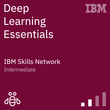Physicist (MSc) | Data Scientist & ML Engineer | AWS Cloud Architect | Quantum Computing
I am a Data Scientist and Machine Learning Engineer with an MSc in Computer Engineering and an MSc in Advanced Physics. My background bridges theoretical physics and applied machine learning, with strong foundations in quantum mechanics, quantum optics, and information theory. My professional experience spans machine learning, deep learning, and data analytics, with a particular focus on scalable architectures and cloud-native solutions using AWS. My thesis work and research have centered on quantum database architectures and the integration of quantum principles into data science workflows. I also contribute technical content as a writer and am recognized for my work in AI and autonomous systems.
- Education: MSc Computer Engineering (UOC), MSc Advanced Physics; advanced programs at MIT & Stanford
- Quantum Focus: Academic background in quantum mechanics, quantum optics, quantum information
- Cloud: AWS Solutions Architect (EC2, S3, RDS, Lambda, DynamoDB, SageMaker, Step Functions)
- Languages: English (B2, UOC certified), Spanish (Native), Catalan (Native)
- Mobility: Open to opportunities in the US (Texas), Germany, Switzerland, UK
My academic trajectory is oriented toward pursuing a PhD in theoretical and computational physics, with a focus on exotic quantum matter and topological quantum computation. I am particularly interested in parafermions (PFs), which generalize Majorana fermions and allow for richer braiding statistics and topologically protected qudit gates. This direction opens up possibilities for more efficient native implementations of complex gates such as the Toffoli gate in topological quantum architectures.
I explore the role of strongly correlated systems—such as fractional quantum Hall states, topological insulators, and hybrid semiconductor–superconductor nanowires—in the realization of PFs. A key part of this research involves hybrid quantum systems that combine spin qubits in quantum dots with parafermionic modes, enabling hybrid qubit–qudit processing schemes. I'm also interested in the emergence of parastatistical particles in 3D systems and their application in robust quantum gate design.
My broader goal is to combine methods from condensed matter physics, many-body theory, computational physics, and machine learning to model, simulate, and design next-generation quantum devices.
- Programming: Python, Jupyter Notebook
- Machine Learning: Neural Networks, Deep Learning, Image Classification, Data Mining, Data Visualization
- Quantum Computing: Quantum mechanics, quantum database architecture, quantum algorithms
- Cloud Solutions: AWS architecture, serverless, deployment, security, automation
- Mathematics: Applied topology, category theory
Several ML and DL projects, including neural network training, image classification with AWS SageMaker, and ML workflow automation using Step Functions.
Thesis repository: Quantum Database Architecture integrating multi-level atomic ensembles, Lindblad operators, EIT, and high-fidelity data encoding for ethical, secure, scalable data science.
Emergent Geometrodynamic Intelligence in Transformers: Lagrangian Dynamics, Gauge Symmetries, and Holographic Emergence
Universitat Oberta de Catalunya · Jun 30, 2025
A unified framework treating large language models as physical systems, showing connections between optimization, information geometry, gauge symmetries, and holography. Proposes “Emergent Geometrodynamic Intelligence” as a paradigm for AI architectures.
MITx 8.06x · Jan 30, 2025
Explores the role of symmetry in quantum mechanics and field theory, tracing developments from the Klein-Gordon equation to spontaneous symmetry breaking and the Higgs mechanism.
Universitat Oberta de Catalunya (UOC) · Jan 7, 2025
Thesis on quantum memory, quantum data encoding, and secure data management, integrating quantum mechanics, optics, and ethical Big Data practices.
IEEE Computer Society · Jun 24, 2024
Analysis of the evolving role of quantum data scientists and the impact of quantum computing on optimization, medicine, and machine learning.
- Quantum mechanics & quantum computing
- Applied topology & category theory
- Cloud architecture & ML workflows
- AI, autonomous systems & robotics
















